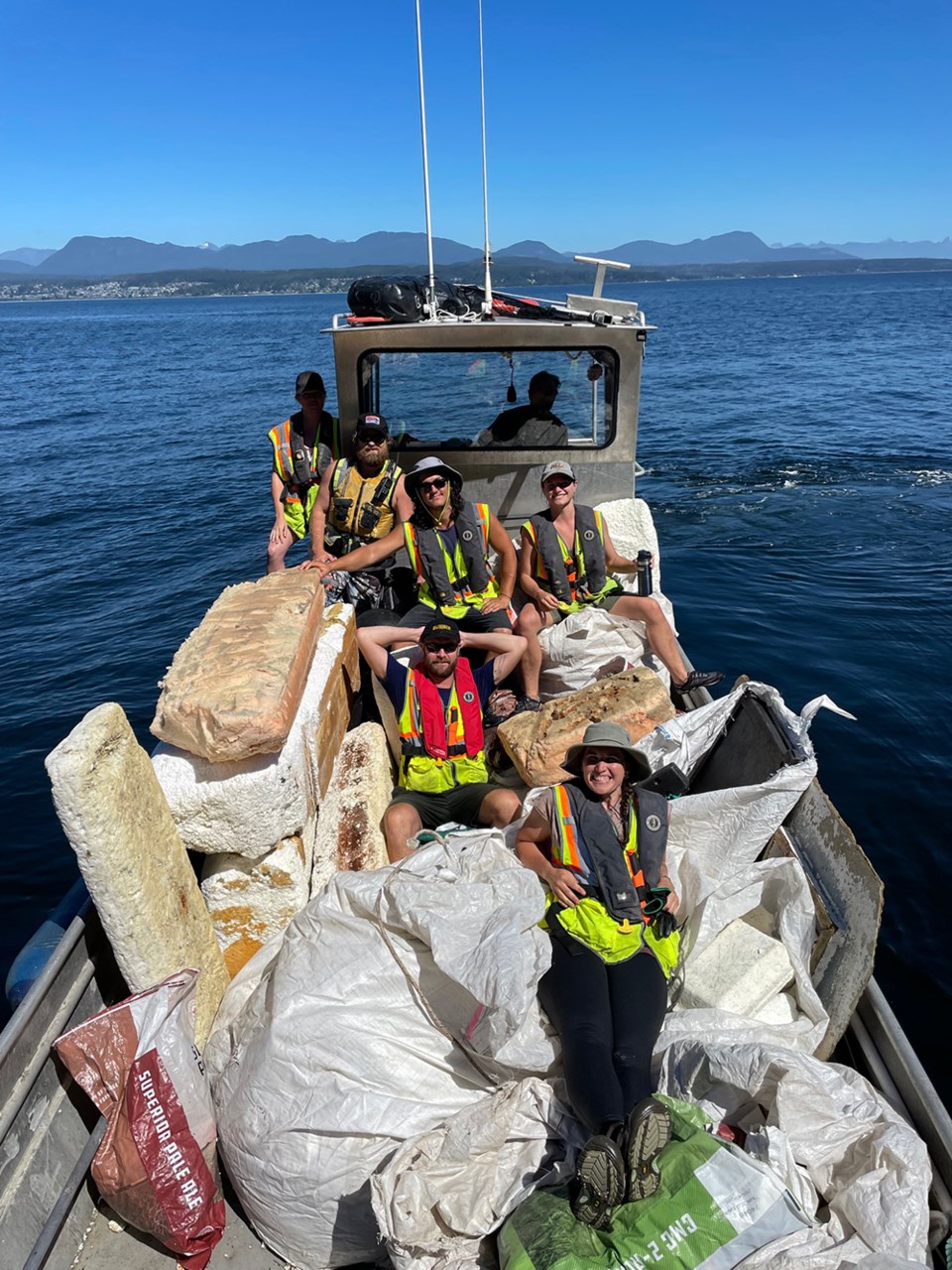Final statistics from the qathet region shoreline cleanup have been compiled, revealing a massive amount of material pulled off beaches throughout the region.
Let’s Talk Trash team member Abby McLennan, who coordinated the cleanup, said she was not particularly surprised at the composition of the findings. The one surprise was the amount of material diverted for local use, which amounted to 4,360 kilograms.
“That was a new initiative this year,” said McLennan. “We didn’t have a lot of expectations apart from just wanting to divert materials. What was able to be diverted definitely surpassed my expectations for what I thought we could get repurposed. It’s significant.”
McLennan said about a third of the material collected, amounting to 19,177 kilograms, was recyclable. She said that usually, the number is higher, but this year, there was nearly 17,000 kilograms of dock material collected, which threw the landfill number up quite a bit and threw off the normal recycling percentage.
McLennan said with financial assistance for the cleanup, organizers were able to hire people for certain projects, such as retrieving boats that were collected off the shoreline that had to be cut and dismantled.
“They couldn’t float so we needed to be able to get them onto a vessel to transport them,” said McLennan. “The funding came in handy to employ the resources we needed to go after some of these more challenging projects.”
McLennan said there is marked improvement on the beaches after shoreline cleanup. The team takes before and after photos as a deliverable for the funding. Some spots of higher concentration have before and after photos that are “pretty astounding.”
The team is hoping to put together a photo and video montage that will hopefully be shared on social media for people to see the work that was done.
Shoreline cleanup took place at sḵelhp (formerly Saltery Bay) up to Thunder Bay, at Vanguard Bay on Nelson Island, Harwood Island, Savary Island, Hernando Island, Twin Islands up into Desolation Sound, up Wellington Channel, the Okeover – Malaspina Inlet area, plus the west end of Texada Island.
McLennan said this year, the team did fewer field days than last year, when 36 field days were undertaken, and more than 36 tonnes of material was collected. This year, 25 field days were conducted because there was a reduction in funding, and just over 54 tonnes was collected. The higher weight total was due to spending more time in areas of higher concentration.
McLennan said that if the province offers funding next year for shoreline cleanup, there will again be local participation. The budget this year was $319,000. There were 45 people employed in the project.
Some of the interesting collections from this year’s project include 3,500 kilograms of white styrofoam. There was 2,350 kilograms of rope picked up, and oyster baskets and crab pots amounted to 1,100 kilograms.
Total debris collected off regional beaches this year was 54,680.82 kilograms.
McLennan said an exciting update for her is that she has been invited to join the president of the Ocean Legacy Foundation, on a trip to Busan, South Korea, for the seventh international marine debris conference. She will be attending as a plastic pollution specialist under the organizational umbrella of the Ocean Legacy Foundation.
“I’m hoping to bring back a wealth of new insight and inspiration,” said McLennan, “to integrate into our regional shoreline cleanup initiative.”



